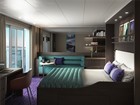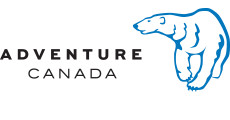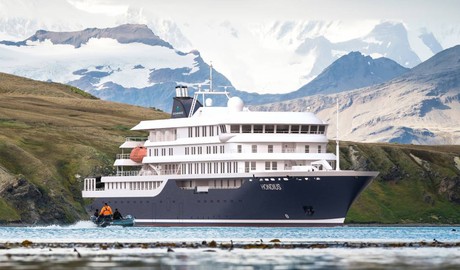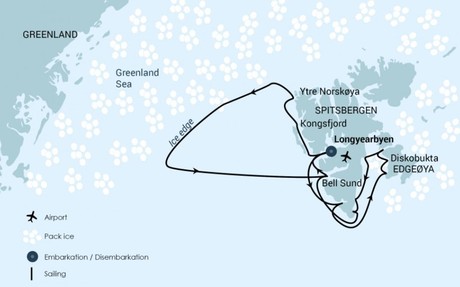North and East Spitsbergen - Summer Solstice
Summer solstice: midnight sun, and 24-hour day
The midnight sun is a phenomenon that occurs during the Arctic summer, when the sun is visible for a full 24 hours in fair weather. The summer solstice falls on 21 June in Longyearbyen. The term solstice (Latin solstitium) means “sun-stopping” and describes the point on the horizon at which the sun appears to rise and set, stopping and reversing directions after this day. On the solstice, the sun does not rise precisely in the east but rather north of east, then later sets to the north of west, making the sun visible for a longer period of time. It will not be until late August that the sun fully goes down again, and then only for a few minutes.Join us in experiencing this fascinating phenomenon during this voyage through the Arctic wilderness of Svalbard.
Highlights
• Zodiac Cruising & Shore Program
• Ytre Norskøya
• Barentsøya
• Edgeøya
• Hornsund
• Bellsund
• Bowhead Whale
• Harp Seal
• Kittiwake
• Polar Bear
• Walrus
• Ivory Gull
|
Book now |
Quadruple Porthole

Triple Porthole

Twin Porthole

Twin Window

Twin Deluxe

Superior

Junior Suite

Grand Suite with Private Balcony

Vessel Type: Polar Class Expedition Ship
Length: 107.6 metres
Passenger Capacity: 170
Built: 2019
Hondius is the first-registered Polar Class 6 vessel in the world, meeting the latest and highest Lloyd’s Register demands for ice-strengthened cruise vessels. Hondius also exceeds the requirements of the Polar Code as adopted by the International Maritime Organization (IMO), allowing you to enjoy the polar regions as much as possible while impacting them as little as possible. Upon completion, Hondius will be the most flexible, advanced, innovative ice-strengthened vessel in the polar regions. It is optimized for exploratory voyages that provide you the utmost first-hand contact with the Arctic and Antarctica.
Hondius offers high-quality accommodation for 170 passengers in six grand suites with balconies (27 square meters, 291 square feet), eight junior suites (19 to 20 square meters, 205 to 215 square feet), eight superior cabins (20 to 21 square meters, 215 to 226 square feet), 11 twin deluxe cabins, (19 to 21 square meters, 205 to 226 square feet), 14 twin window cabins (12 to 14 square meters, 129 to 151 square feet) as well as 28 twin porthole cabins, two triple porthole cabins, and four quadruple porthole cabins that vary in size from 12 to 18 square meters, or 129 to 194 square feet. The passenger capacity certificate for Hondius is 196 persons. One deck consists of a large observation lounge and separate lecture room, which are reserved for a wide variety of interactive workshops, exhibitions, and performances particular to Hondius. Though elegantly designed in stylish mid-century modern décor, this vessel holds true to Oceanwide’s distinctive cozy and informal atmosphere.
It is our philosophy to keep sea time short so that we can focus instead on fast, effective access to shore and near-shore activities. To give you the maximum contact with the nature and wildlife you traveled so far to see, we employ a tough fleet of rigid-hull inflatable Zodiac boats that guarantee swift and safe landing operations for the passengers. Hondius has two separate gangways and a sheltered indoor Zodiac embarkation platform that can also be used for special outdoor activities, such as kayaking.
Our top priority is taking advantage of every wildlife and terrain opportunity as it occurs. To keep our itineraries flexible itineraries and our response time rapid, Hondius is equipped with advanced stabilizers and two main engines capable of powering the vessel up to 15 knots. But Hondius sacrifices no warmth to achieve its keen polar edge: You will have 72 crew and staff members (including expedition and hotel staff) at your service while on board, ensuring that what little time you do spend on the ship you will spend comfortably entertained.


Inclusions
• Voyage in selected accommodation category
• All meals while on board the ship
• Coffee and Tea while on board
• All shore excursions and landings by zodiac as per the itinerary
• Lectures held on board by Expedition Team and natuarlists
• Port Charges/Taxes
• Comprehensive Pre-departure materials
Exclusions
• International and domestic airfares whether commercial or charter
• Pre and Post-voyage accommodation
• Passport and visa costs if applicable
• Travel insurance including medical evacuation cover
• Beverages not listed in inclusions
• Any items of a personal nature including any medical costs incurred on board
• Meals when not on board the ship
• Gratuities (Recommended USD$15 per passenger per day)
Our Associates Include







